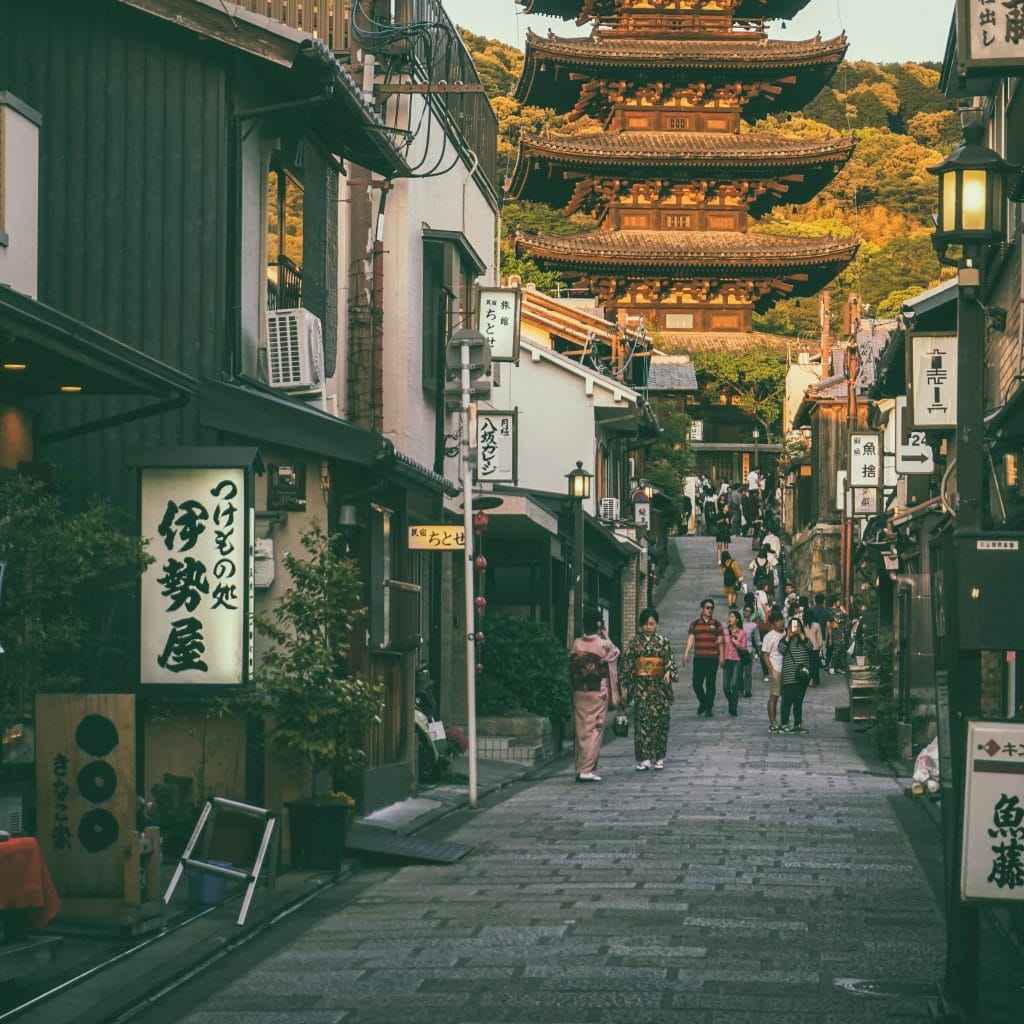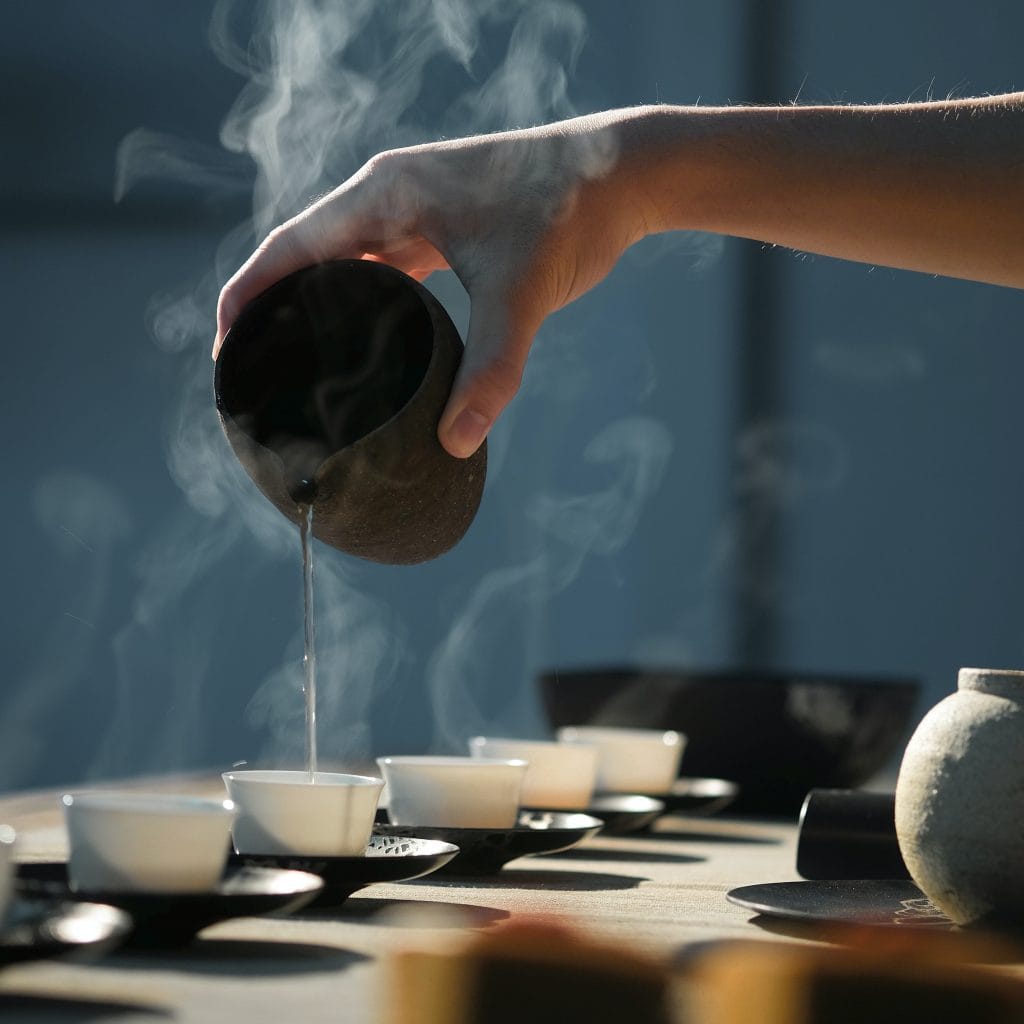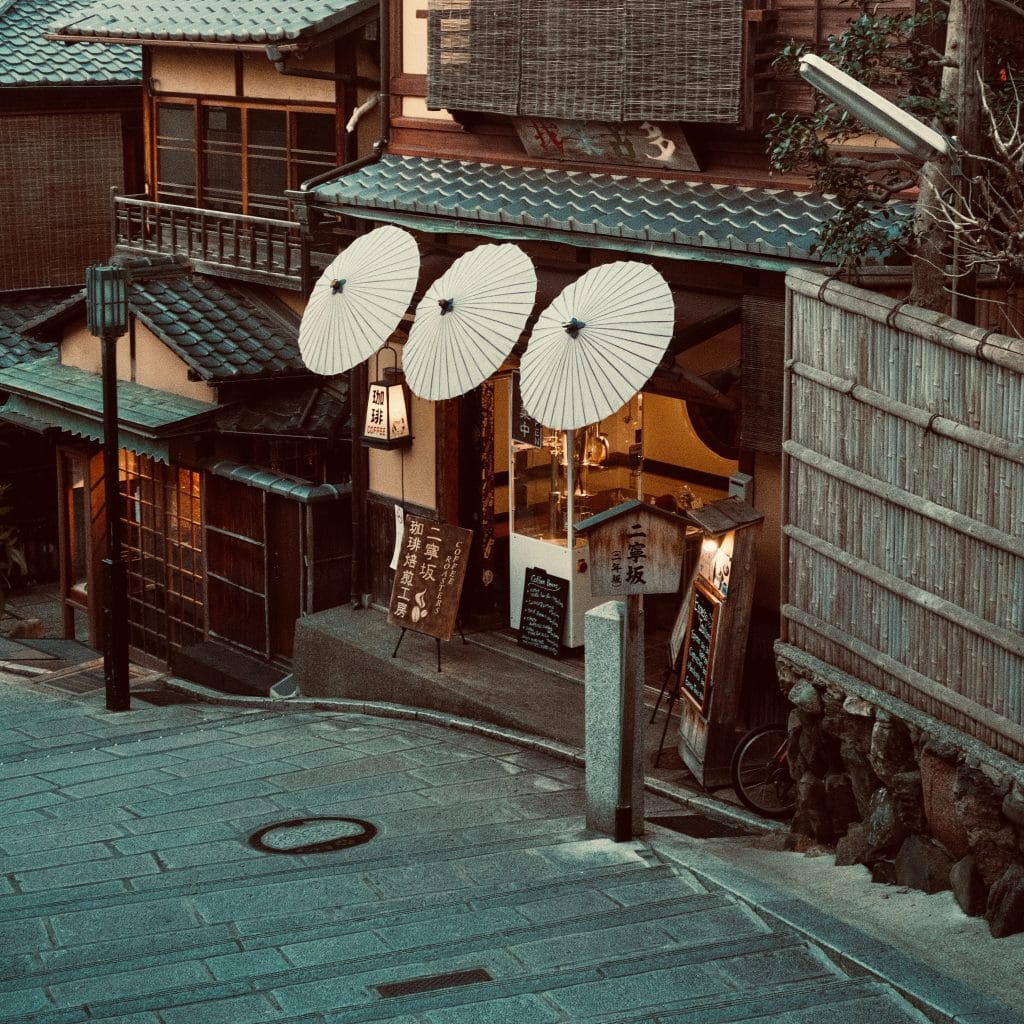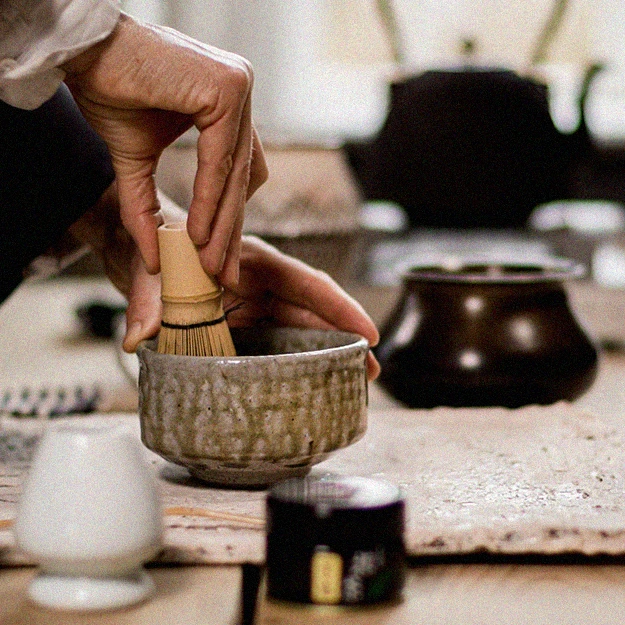Sing Tehus is now B Corp certified! Read more
Japanese tea
Tea has been drunk in Japan since the ninth century. An ancient Japanese document describes a priest named Saicho bringing the first tea to Japan from China in 805.
In China, tea has been known for thousands of years and during the Tang Dynasty (618-907) many Japanese travelled to China for art, culture and especially Buddhism, which was in full bloom at the time. During their travels, the Japanese also became acquainted with tea, which was an important cultural and social element during this period when producing, preparing and drinking tea could be a complex and sophisticated affair. The most common form of tea in the Tang Dynasty was the 'tea cake'. These cakes were made by pounding lightly steamed tea leaves into a paste, which was then pressed and baked. When preparing tea, pieces of the 'cake' were broken, ground into a powder and then mixed with hot water, various spices, herbs and salt. In the latter half of the Tang Dynasty period, tea is quite common and is drunk daily.
For a long time in Japan, tea was reserved for monks, the upper classes, the samurai and the "important people". Tea was used as a stimulant during meditation in Zen Buddhist temples, which is still the case in temples today.


Philosophy
Tea still holds an important place in Japan today. Tea is now for everyone and can be purchased in many quality levels.
Tea has become a philosophy (Cha-do = Way of Tea), part of the finest and most sophisticated part of Japanese culture (the Japanese tea ceremony) and even the former Imperial Palace in Kyoto, Katsura Rikyu, was built in 1620-1663 with a focus on tea culture as each palace is built around a tea (fire) place.
Today, there are hundreds of tea schools in Japan and millions of people work with tea in Japan. Green tea Enjoyed daily by most Japanese people, green tea is used in food, cakes and desserts. Green tea can also be enjoyed and experienced on an elevated level, in the form of the Japanese tea ceremony (established in the 16th century by Zen monk Sen no Rikyou 1522-1591), which is an art form that the Japanese still consider one of the finest in a field where art and spirituality meet in a demanding discipline that takes many years to learn and understand.
Today, many Japanese people, especially women, meet at modern teahouses that can be found throughout Japanese cities.
Tea production
Today, there are several areas in Japan that are optimal for tea production. The largest area is called Shizouka and is located in central Japan between Tokyo and Kyoto. Here you'll find many tea producers of all sizes, as well as a tea auction from which much of the internal trade in Japan takes place. The tea auction in Shizouka also deals with the international market. One of the oldest and most famous areas is called Uji and is located outside Kyoto. It is also believed to be where the first tea seeds were sown that the monk Eisai brought from China in 1191. The Japanese tea we sell at Sing Tehus comes from the southern island of Kuyshu, where the Hoshino Seicha is located in a mountainous area near the town of Yame.
Hoshino Seichaen is a family-run business founded in 1946 and is today run by the Yamaguchi brothers, who over the past 10 years have trained the next generation to take over in the near future. Hoshino Seichaen is a well-known and highly recognised tea production company in Japan. They are often recognised in Japan for their high quality and last year they received a gold medal for one of their gyokuro teas. This is quite an achievement in Japan, where there are thousands of tea producers.


Production methods
In Japan, green tea is primarily grown. However, in the last 10 years, several producers have started a small production of oxidised tea (black tea). The black tea, like the green tea, is of very high quality. The black tea is called Koucha.
The special characteristic of Japanese green tea is its high quality. The Japanese are often characterised as a people with a slightly extreme approach (extreme care) to many things. This also applies to their approach to tea production. They have developed production methods that far surpass the techniques and processing usually associated with tea production.
In Japan, the leaves are steamed and dried in several stages and then rolled to give them a "needle-shaped" appearance. For the finer teas (gyokuro tea and matcha tea), the tea bushes are covered with bamboo mats so that the bushes are not in direct sunlight. This shading gives the tea a more intense, fresh and sweet flavour. The high quality teas are picked only once a year, which is in May, this picking is called ichi ban cha. Once the leaves are picked (by hand for the very high quality teas), the leaves are transported by refrigerated lorry to a nearby production site and within 1 hour, the leaves are processed and placed in cold storage so they do not lose their freshness and vitality.
Japanese green tea quality is determined by the deep green colour of the dry needle-shaped leaves. Japanese green tea can have a variety of flavours from mineral to juicy grassy taste. A common characteristic is the fresh flavour, which in some teas can taste more like seaweed and in others like spinach/peas/vegetables.
Get exclusive news and promotions delivered straight to your inbox. Also, look forward to ongoing inspiration on new ways to use tea, such as cold brewing, soothing tea face masks and much more. Sign up for the newsletter here.
Sign up for our newsletter and get 10% off your first purchase.

